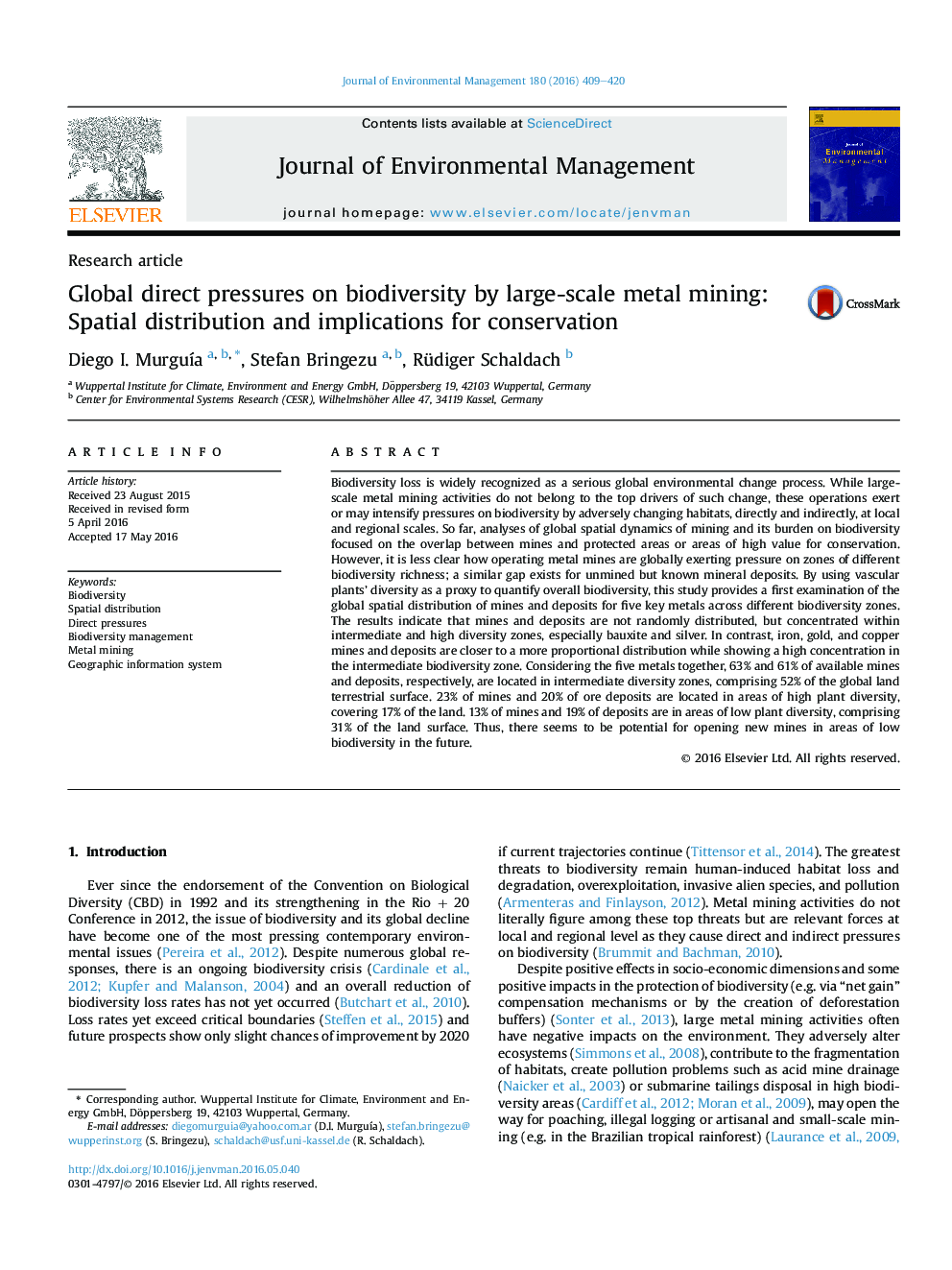| Article ID | Journal | Published Year | Pages | File Type |
|---|---|---|---|---|
| 7480170 | Journal of Environmental Management | 2016 | 12 Pages |
Abstract
Biodiversity loss is widely recognized as a serious global environmental change process. While large-scale metal mining activities do not belong to the top drivers of such change, these operations exert or may intensify pressures on biodiversity by adversely changing habitats, directly and indirectly, at local and regional scales. So far, analyses of global spatial dynamics of mining and its burden on biodiversity focused on the overlap between mines and protected areas or areas of high value for conservation. However, it is less clear how operating metal mines are globally exerting pressure on zones of different biodiversity richness; a similar gap exists for unmined but known mineral deposits. By using vascular plants' diversity as a proxy to quantify overall biodiversity, this study provides a first examination of the global spatial distribution of mines and deposits for five key metals across different biodiversity zones. The results indicate that mines and deposits are not randomly distributed, but concentrated within intermediate and high diversity zones, especially bauxite and silver. In contrast, iron, gold, and copper mines and deposits are closer to a more proportional distribution while showing a high concentration in the intermediate biodiversity zone. Considering the five metals together, 63% and 61% of available mines and deposits, respectively, are located in intermediate diversity zones, comprising 52% of the global land terrestrial surface. 23% of mines and 20% of ore deposits are located in areas of high plant diversity, covering 17% of the land. 13% of mines and 19% of deposits are in areas of low plant diversity, comprising 31% of the land surface. Thus, there seems to be potential for opening new mines in areas of low biodiversity in the future.
Keywords
Related Topics
Physical Sciences and Engineering
Energy
Renewable Energy, Sustainability and the Environment
Authors
Diego I. MurguÃa, Stefan Bringezu, Rüdiger Schaldach,
